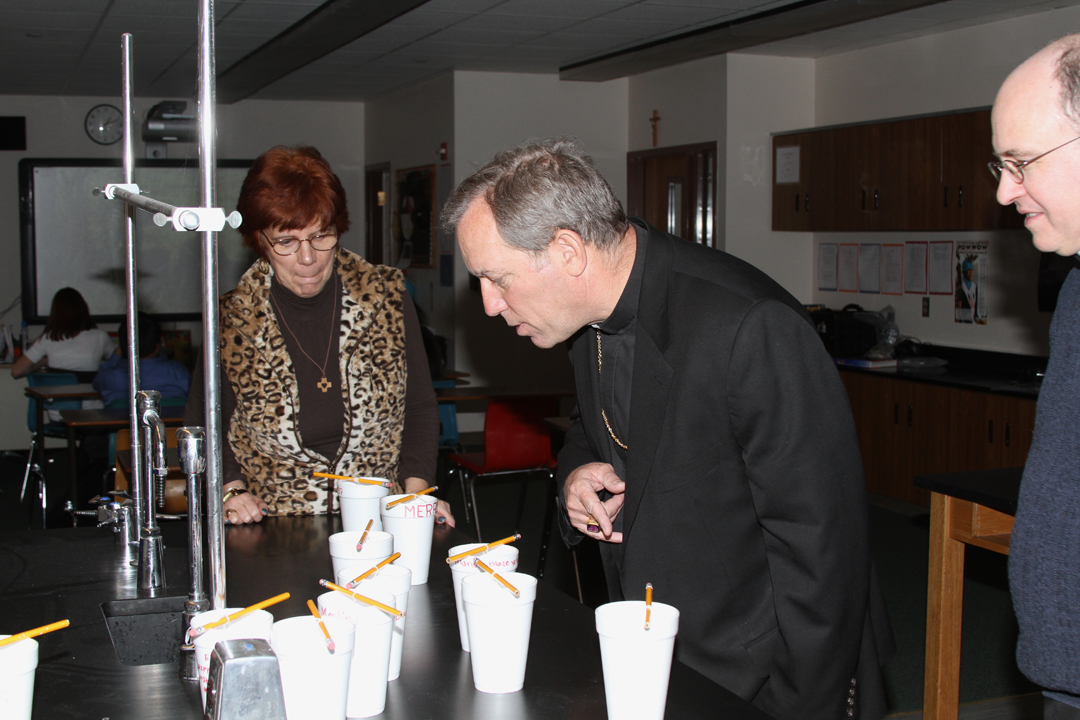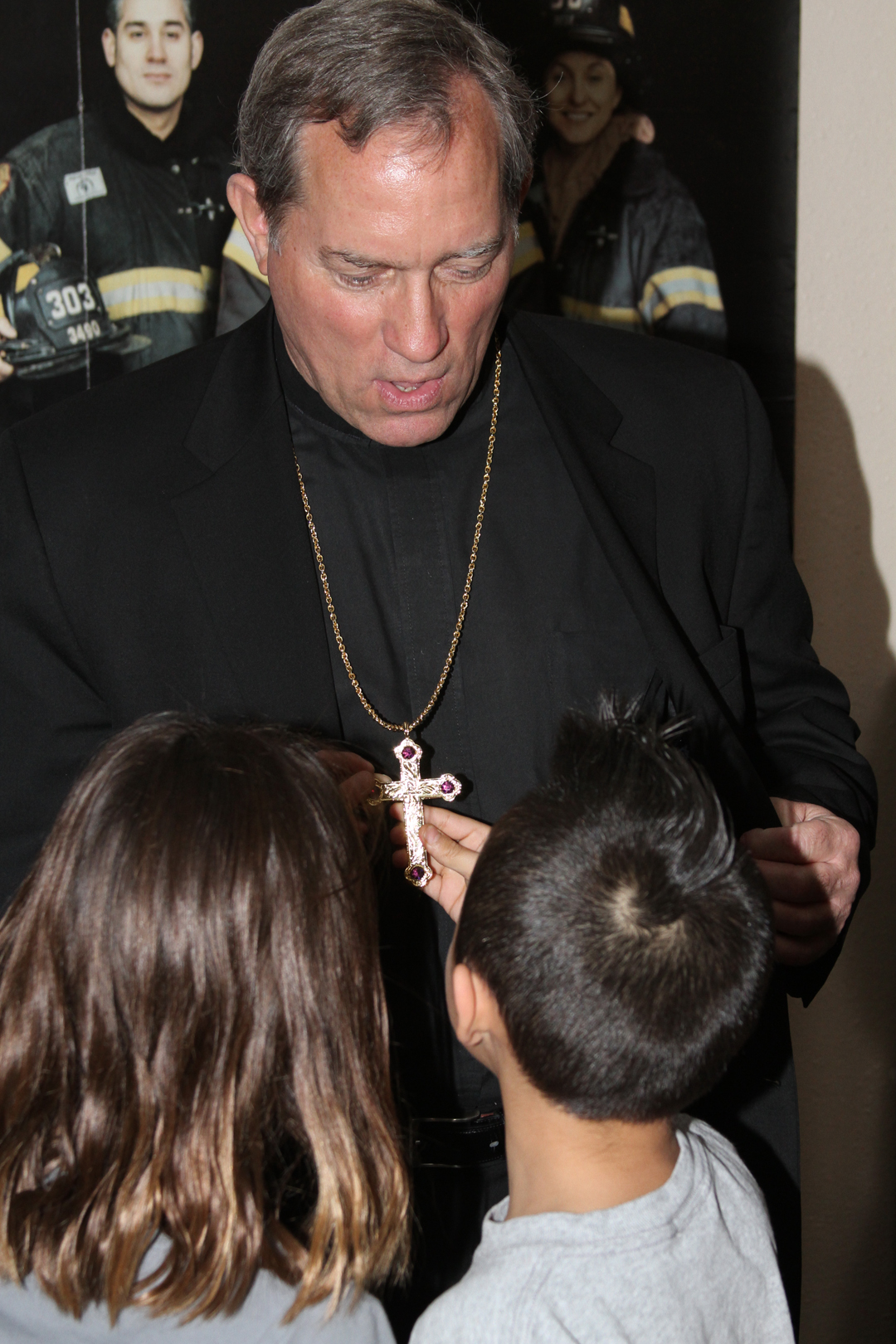I’ve been around campus the past few days, but haven’t spent much time in the office. Starting Monday afternoon through this morning, all the priests and deacons who are part of the Sioux Falls Diocese gathered for our annual Clergy Days. Besides topics of continuing education, it provides the chance for social time and renewing friendships and support. The diocese gathered just across the river at Cedar Shores Convention Center. Rather than getting a hotel room three miles away I commuted, and was able to check in with life on campus and take care of a few of the notes and messages that come my way.
In the midst of that, on Wednesday we held a Board of Directors meeting for St. Joseph’s Indian School. One of the main fall items is to review the audit report. The good news is that the books are in good shape and the numbers add up to make our programs possible. We heard reports not just from our Child Services programs, but from the Sacred Heart Center in Eagle Butte, where we support a wide range of Indian reservation based social services programs, and from the Lower Brule and Crow Creek reservations, where my SCJ community continually reaches out through parish work to meet pastoral needs.
Deacon Dave Nagel, who was the director at St. Joseph before me, is now our provincial treasurer and still serves on the board. He enjoyed his time back on campus and made the rounds to catch up with as many of the staff as he could.
At our Clergy Days Social, Fr. Jerome, who is now retired, told me he had been a missionary with Maryknoll in Thailand. Craig, our junior high Language Arts teacher, also worked there, and in fact met his wife Ja overseas. In one of those small world stories, they knew each other, and after a quick phone call I was able to help them reconnect and relive lots of memories.
Besides theological input, the South Dakota Department of Criminal Investigation helped educate us on the scourge of methamphetamines. While big cities may struggle more with cocaine or heroin, for the Midwest and rural America in particular, meth is the bigger problem. On the Lower Brule Indian Reservation, near tribal headquarters, a prominent billboard reminds the tribe, “Meth is Death.” From my time as pastor, I would agree that addictions of every kind tear families apart and are the biggest block to spiritual growth and well-being. The stories from police in the field, and hard to view photos to back them up, brought home the harsh reality in a new and powerful way. In a few weeks we at St. Joseph will celebrate Red Ribbon Week, trying to get across the message early and often to our students – we all need to work together to prevent drug abuse and the horrible impact it has on our communities.
Clergy Days was not all meetings. One evening was the jubilee celebrations for those who have served in the priesthood for 25, 50 and even 60 years. Another evening the local Knights of Columbus grilled some good South Dakota steaks and hosted everyone at the local parish. Tuesday afternoon was free for folks to relax, and I offered a tour of St. Joseph’s campus for folks who have not seen our facilities. We started at Akta Lakota Museum, then dropped by the school. Our second graders were using the smart board to polish their addition by learning to count coins and add up the values. Our choir was practicing songs for church on Sunday, and took us through the hand motions to the song “His Banner of Me is Love.” I was tickled to see one of the 80-year-old priests, seated in a chair, smiling as he mimicked their actions.
Once school was out, we visited Afra Home, where the 1st – 3rd grade girls were gracious hostesses and gave tours. Some were very brief –
“Here is the dining room and here is the kitchen.”
Other students took lots of time showing everything, even digging out the variety of toys in the playroom.
We ended our tour in Our Lady of the Sioux Chapel, and spoke of our pastoral and spiritual efforts to help our students come to know and love God.
After school on Wednesday, I heard the loud beat of the drum, and followed the sound to the edge of the playground. Our Chalk Hills Singers group was gathered around the drum in the shade of an old cottonwood tree. Dave, one of our Native American Studies teachers, was helping them master the songs. It was also his birthday, so when I mentioned it, his son Courage started on the drum, and led the group in a powwow style ‘Happy Birthday’ song.
As I walked back to the office, I ran into our Student Leadership Group, loaded down with carrying bags, full of goodies. They had been up to Central Receiving, where we keep all our donated items. Through people’s generosity we have gotten a large amount of school supplies, and they were bagging up items we have a lot of, like crayons and notebooks, and preparing some gift bags for students in nearby schools who are in need. I thanked Frank, their adviser, for organizing such a thoughtful service project as our students learn the important values of generosity and service.



